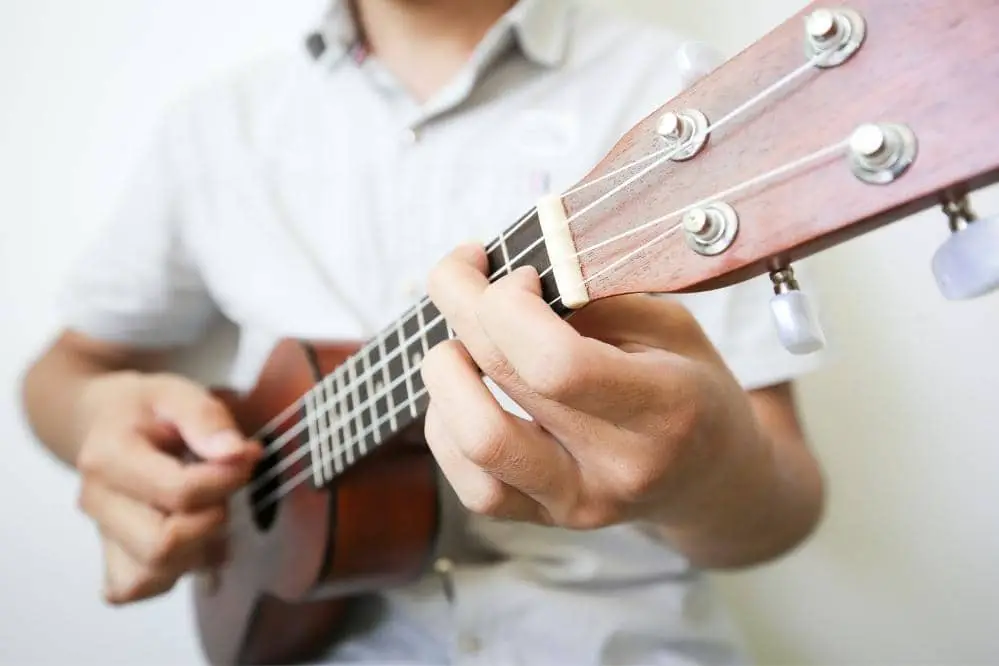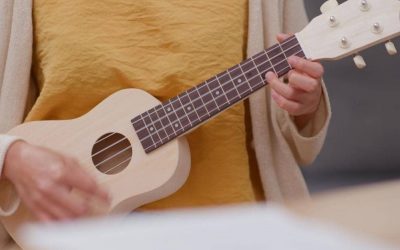When you are learning to play the ukulele, it is important to practice. This is the best way to toughen up your fingers and become more fluid in your music. Sometimes, people feel as though they are not making any progress, and they want to know ukulele practice tips for beginners. Take a look at the following ways that you can improve more quickly.
1. Always Make Sure That Your Ukulele Is in Tune
When you are learning to play the ukulele, you should create a habit of tuning your ukulele before you practice. Do this each time you play. When your ukulele is out of tune, it is more difficult to learn new songs because it won’t sound right. When you make a habit of tuning your ukulele, you will develop a better ear for the music, and you will be able to start playing without looking at the instrument.
You can use an electronic tuner, which helps you make sure that each string is correct. Then when you play, you will get the right notes when you place your fingers in the correct position on the fretboard. This will help you progress when you are learning to play.
2. Learn the Most Common Ukulele Chords
Most of the songs that you will learn when you start playing the ukulele will use five different chords. This includes the C chord, the G chord, the F chord, the D chord, and the A chord. Although there are many others, start out by practicing these five until you have them down cold.
You can do exercises where you use a metronome and play each chord. You can increase the tempo as you go. Include this exercise in each of your practice sessions so that you learn these chords. By taking time to practice them each day, you will be able to play many different songs sooner.
3. Use a Metronome to Improve Your Timing
Another great tip is to use the metronome to improve your timing. Timing is critical when you are making any kind of music, and the ukulele is no different. If you know all of the notes but don’t have the timing, the songs won’t sound the way they should.
The metronome will beep in sequence, and you can set it where you want it. You can set the metronome slower to learn how to play more precisely. This allows you to control your timing. Take a simple song, and set the metronome to play it 20 beats per minute slower than it should be.
Once you nail it, increase it by five beats per minute. Continue increasing it until you are playing it at the tempo it is meant to be played at. Take the time to go through these steps, and it will improve your timing.
4. Practice in Short Sessions More Frequently
When you are beginning to play the ukulele, you need to build up muscle memory and strength. This happens through repetition. However, if you practice for too long in each session, your fingers and hands will get tired.
In one session, you should go through the chords in progression. Take the chords in a song and move in progression through them repeatedly. This will build muscle strength and muscle memory and it will be easier to play the song when it is time. It becomes effortless, and you won’t need to focus too hard or think about it as you move through the chords.
It is important to take breaks frequently so that your fingers don’t grow tired. In addition, after you practice, you need to take a break so that the muscle memory takes hold. Each time you pick up your ukulele to play the song again, it will be easier and require less of your attention.
5. Always Practice with Good Posture and Form
From the moment that you begin playing any musical instrument, you need to make sure that you practice with good posture and good form. The first thing that you need to do is sit upright. You shouldn’t slump or arch your back. You should sit up with your back straight.
Next, you need to make sure that you are holding the ukulele correctly. If you are holding it in an unnatural way, you can pick up bad habits and actually make it more difficult to play correctly. It will prevent you from learning how to play it and take some of the fun out of it.
You should support your ukulele directly below your chest. You can hold the body of the ukulele in place with your forearm, and use your fretting hand to position it. Once you have it in the correct position, make sure that you keep it there while you are practicing.
Final Words
When you start learning to play the ukulele, you will be excited to learn to play your first song. There are strategies that you can use to improve more quickly so that you can reach that place sooner. You should always keep your ukulele in tune because it will help you recognize the chords. You will be able to play them more easily with less focus.
You should also use a metronome because it will help you learn timing. You will also be able to play more accurately. Learn the most common chords and practice frequently in short spurts. You will build muscle memory and be able to play sooner than you expect.




